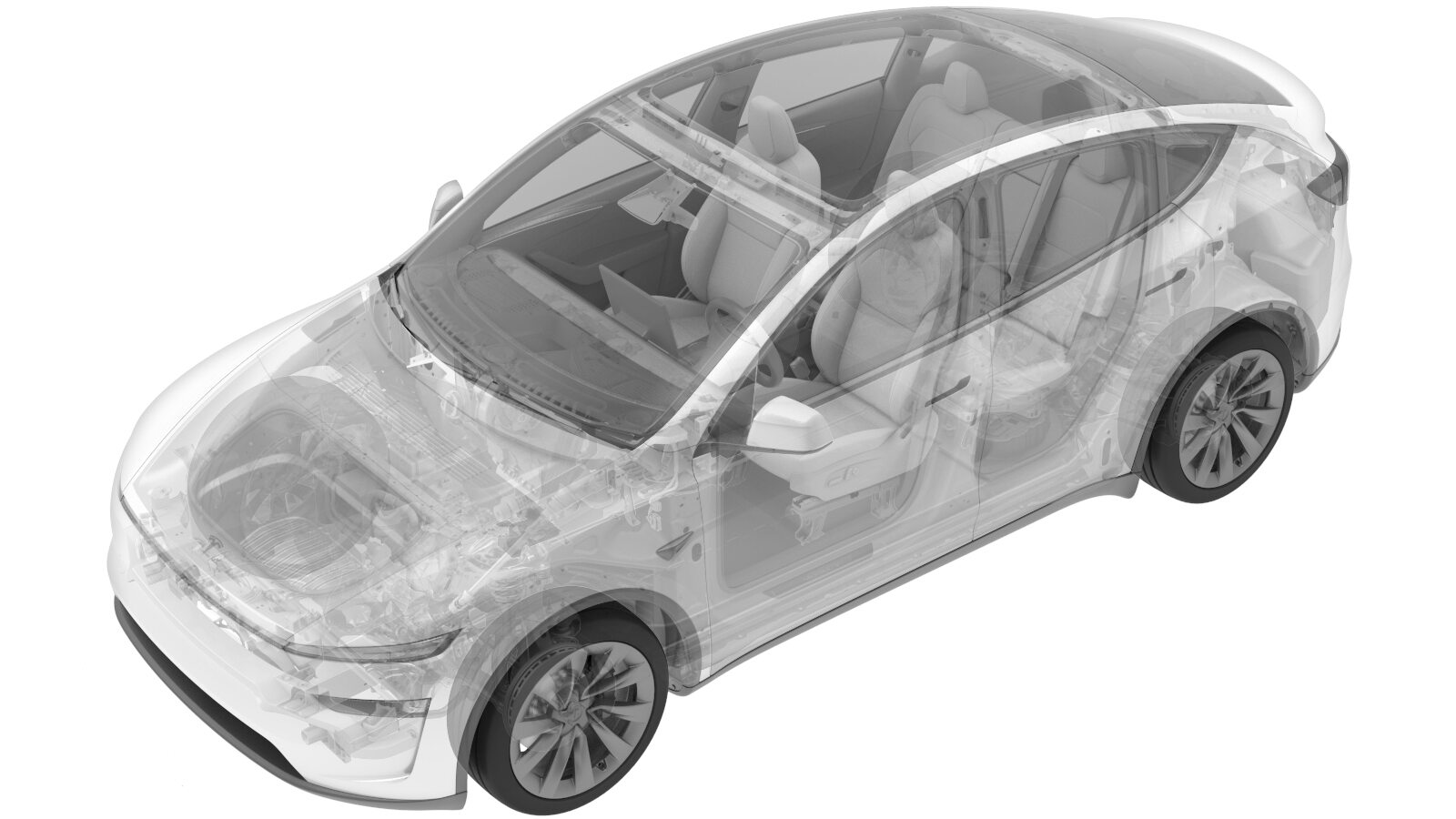Hydraulic Control Unit - Brake (HCU/ESP) (Remove and Install)
 Correction code
3310010101
FRT
1.98
NOTE: Unless otherwise explicitly stated in the procedure, the above correction code and FRT reflect all of the work required to perform this procedure, including the linked procedures. Do not stack correction codes unless explicitly told to do so.
NOTE: See Flat Rate Times to learn more about FRTs and how they are created. To provide feedback on FRT values, email ServiceManualFeedback@tesla.com.
NOTE: See Personal Protection to make sure wearing proper PPE when performing the below procedure.
NOTE: See Ergonomic Precautions for safe and healthy working practices.
Correction code
3310010101
FRT
1.98
NOTE: Unless otherwise explicitly stated in the procedure, the above correction code and FRT reflect all of the work required to perform this procedure, including the linked procedures. Do not stack correction codes unless explicitly told to do so.
NOTE: See Flat Rate Times to learn more about FRTs and how they are created. To provide feedback on FRT values, email ServiceManualFeedback@tesla.com.
NOTE: See Personal Protection to make sure wearing proper PPE when performing the below procedure.
NOTE: See Ergonomic Precautions for safe and healthy working practices.
- 2025-04-10: Added torque values for different brake calipers.
Torque Specifications
| Description | Torque Value | Recommended Tools | Reuse/Replace | Notes |
|---|---|---|---|---|
| Bolt that attaches the steering column to the steering gear assembly |
 18 Nm (13.3 lbs-ft) |
|
Replace | 1111523-00-A |
| Bolt that secures the A/C compressor ground strap |
 7 Nm (5.2 lbs-ft) |
|
Reuse | |
| Bolts (x2) that attach the compressor and bracket assembly to the shock tower brace |
 31 Nm (22.9 lbs-ft) |
|
Reuse | |
|
Nuts (x4) that attach the 4-tube bundle brake pipes to the HCU Nut that attaches the master cylinder secondary pipe to the HCU Nut that attaches the master cylinder primary pipe to the HCU |
 18 Nm (13.3 lbs-ft) |
|
Reuse | |
| Bolts (x2) that attach the HCU to frame rail |
 10 Nm (7.4 lbs-ft) |
|
Reuse | |
| Grommet nuts (x2) that attach the HCU to the HCU bracket |
 8 Nm (5.9 lbs-ft) |
|
Reuse |
Remove
-
Place the vehicle on the 2-post
lift.
TIpEnsure the vehicle is not charging.
- Open the LH front door and lower the LH front window.
-
Lock the steering wheel into
position.
- Remove the underhood storage unit. See Underhood Storage Unit (Remove and Replace).
- Remove the LV battery. See LV Battery (Remove and Install).
- Remove all the four wheels. See Wheel Assembly (Remove and Install).
- Remove the front aero shield panel. See Aero Shield - Front (Remove and Replace).
- Lower the vehicle to a comfortable working height and set the lift onto locks.
-
Remove and discard the bolt that
attaches the steering column to the steering gear assembly.
TIpUse of the following tool(s) is recommended:
- 13 mm deep socket
-
Slide the steering column upward to
disconnect it from the steering gear assembly.
- Position a fluid catcher underneath the front of the vehicle.
-
Position protective fender cover over
the fan shroud.
-
Disconnect the HVIL connector.
NotePull the red tab to disengage the lock, and then pull it again to release the connector.
-
Disconnect the A/C compressor logic
connector.
-
Remove the clip that attaches the
harness to the HV harness bracket.
-
Remove the bolt that secures the A/C
compressor ground strap.
TIpUse of the following tool(s) is recommended:
- Torx T25 socket
-
Remove the tree clip that attaches the
radiator inlet hose to the A/C compressor bracket.
-
Remove the retaining clips (x5) that
attach the A/C compressor HV harness to the shock tower support brace.
NotePull upward on the clips to assist with removal. Do not pull on the HV cable. Discard any damaged clip.
-
Remove the tree clips (x4) that attach
the coolant hose to the A/C compressor bracket.
-
With assistance, remove the bolts (x2)
that attach the compressor and bracket assembly to the shock tower brace, and then move
the compressor and bracket assembly aside.
NoteSupport the A/C compressor while removing the fasteners. Carefully move the compressor and bracket assembly towards the front of the vehicle.TIpUse of the following tool(s) is recommended:
- 15 mm deep socket
-
Disconnect the HCU connector.
NoteRelease the red locking tab, then press the black release tab and rotate the lever upward to remove.
-
Release the HCU connector harness
clip.
-
Place absorbent material underneath
the brake lines and the brake fluid reservoir to catch any fluid lost.
-
Remove the nuts (x4) that attach the
4-tube bundle brake pipes to the HCU.
TIpUse of the following tool(s) is recommended:
- 12 mm 6-point flare nut wrench
-
Release the 4-tube bundle brake pipes
from the spacer.
NoteDo not bend the pipes.
-
Remove the nut that attaches the
master cylinder secondary pipe to the HCU.
TIpUse of the following tool(s) is recommended:
- 12 mm 6-point flare nut wrench
-
Remove the nut that attaches the
master cylinder primary pipe to the HCU.
TIpUse of the following tool(s) is recommended:
- 12 mm 6-point flare nut wrench
-
Release the clips (x2) to remove the
spacer from the master cylinder brake pipes.
NoteDo not bend the pipes.
-
Release the master cylinder brake
pipes from the clips (x2) at the rear of the HCU bracket.
NoteDo not bend the pipes.
-
Remove the bolts (x2) that attach the
HCU to frame rail.
TIpUse of the following tool(s) is recommended:
- 10 mm socket
-
Release the tabs (x2) to remove the
HCU and bracket assembly.
NoteNegotiate the HCU around the brake lines. Take care not to damage the bracket tabs.
-
Loosen the grommet nuts (x2) that
attach the HCU to the HCU bracket.
TIpUse of the following tool(s) is recommended:
- 10 mm socket
-
Pry the HCU from the HCU
bracket.
Install
-
Install the HCU into the HCU
bracket.
-
Install the grommet nuts (x2) that
attach the HCU to the HCU bracket.
 8 Nm (5.9 lbs-ft)TIpUse of the following tool(s) is recommended:
8 Nm (5.9 lbs-ft)TIpUse of the following tool(s) is recommended:- 10 mm deep socket
-
Secure the tabs (x2) to install the
HCU and bracket assembly onto the vehicle.
NoteNegotiate the HCU around the brake lines. Align the bracket tabs with the body holes.
-
Install the bolts (x2) that attach the
HCU to frame rail.
 10 Nm (7.4 lbs-ft)TIpUse of the following tool(s) is recommended:
10 Nm (7.4 lbs-ft)TIpUse of the following tool(s) is recommended:- 10 mm socket
-
Install the master cylinder brake
lines to the clips (x2) at the rear of the HCU bracket.
-
Clip the spacer onto the master
cylinder brake pipes.
-
Hand-tighten the nut that attaches the
master cylinder primary pipe to the HCU, and then torque it.
 18 Nm (13.3 lbs-ft)TIpUse of the following tool(s) is recommended:
18 Nm (13.3 lbs-ft)TIpUse of the following tool(s) is recommended:- 12 mm 6-point flare nut wrench
-
Hand-tighten the nut that attaches the
master cylinder secondary pipe to the HCU, and then torque it.
 18 Nm (13.3 lbs-ft)TIpUse of the following tool(s) is recommended:
18 Nm (13.3 lbs-ft)TIpUse of the following tool(s) is recommended:- 12 mm 6-point flare nut wrench
-
Clip the 4-tube bundle brake pipes
onto the spacer.
-
Install the nuts (x4) that attach the
4-tube bundle brake pipes to the HCU.
 18 Nm (13.3 lbs-ft)NoteClean the lines with brake cleaner before mating as needed.TIpUse of the following tool(s) is recommended:
18 Nm (13.3 lbs-ft)NoteClean the lines with brake cleaner before mating as needed.TIpUse of the following tool(s) is recommended:- 12 mm 6-point flare nut wrench
-
Secure the HCU harness clip to the HCU
bracket.
-
Connect the HCU connector.
NoteRotate the lever downward, and then secure the red locking tab.
-
With assistance, install the bolts
(x2) that attach the compressor and bracket assembly to the shock tower brace.
 31 Nm (22.9 lbs-ft)TIpUse of the following tool(s) is recommended:
31 Nm (22.9 lbs-ft)TIpUse of the following tool(s) is recommended:- 15 mm deep socket
-
Install the tree clips (x4) that
attach the coolant hose to the A/C compressor bracket.
-
Install the retaining clips (x5) that
attach the A/C compressor HV harness to the shock tower brace.
NoteVisually inspect the clips and replace any damaged clip.
-
Install the tree clip that attaches
the radiator inlet hose to they A/C compressor bracket.
-
Install the bolt that secures the A/C
compressor ground strap.
 7 Nm (5.2 lbs-ft)TIpUse of the following tool(s) is recommended:
7 Nm (5.2 lbs-ft)TIpUse of the following tool(s) is recommended:- Torx T25 socket
-
Install the clip that attaches the
harness to the HV harness bracket.
-
Connect the A/C compressor logic
connector.
-
Connect the HVIL connector.
- Install the LV battery. See LV Battery (Remove and Install).
-
Remove the protective fender cover
over the fan shroud.
- Remove the fluid catcher from underneath the vehicle.
-
Slide the steering column downward to
connect it to the steering gear assembly.
NoteEnsure the intermediate shaft is aligned and fully seated.
-
Install a new bolt that attaches the
steering column to the steering gear assembly.
 18 Nm (13.3 lbs-ft)TIpUse of the following tool(s) is recommended:
18 Nm (13.3 lbs-ft)TIpUse of the following tool(s) is recommended:- 13 mm deep socket
- Locally connect a laptop with Toolbox 3 to the vehicle. See Toolbox (Connect and Disconnect).
- Clean the area around the brake fluid reservoir breather cap and remove the cap.
- Add clean brake fluid to the full level in the bleeder reservoir.
- Add clean brake fluid to the MAX level in the reservoir.
- Install the pressure bleeder adapter onto the vehicle brake reservoir.
- Connect power supply to the bleeder tool, and then turn the bleeder tool on.
- Set the brake bleed reservoir pressure to 30 PSI, and then attach the brake bleed reservoir to the brake bleed adapter.
-
Bleed the inner valve of the LH front
caliper.
-
Bleed the inner valve of the RH front
caliper.
-
Bleed the RH rear caliper.
-
Bleed the LH rear caliper.
- Turn off and remove the pressure brake bleeder kit from the vehicle.
- Check the brake fluid level and top off as necessary.
- Install the service brake reservoir cap.
- Remove the absorbent material from underneath the brake booster assembly and the reservoir area.
-
Perform the following
routine using Service Mode or Toolbox (see 0005 - Service Modes):
- Press the brake pedal several times to verify proper feel and action.
- Exit Service Mode or disconnect the laptop if applicable (see 0005 - Service Modes).
- Install the front aero shield panel. See Aero Shield - Front (Remove and Replace).
- Install all the four wheels. See Wheel Assembly (Remove and Install).
- Install the underhood storage unit. See Underhood Storage Unit (Remove and Replace).
- Install the HEPA filter assembly. See HEPA Filter Assembly (Remove and Replace).
- Remove the steering wheel holder.
- Raise the LH front window and close the LH front door.
- Remove the vehicle from the lift.
-
Perform a road test to make sure there
is proper pedal feel and brake performance.
NoteAdd test drive correction code 00040100 as a separate activity to the Service Visit.